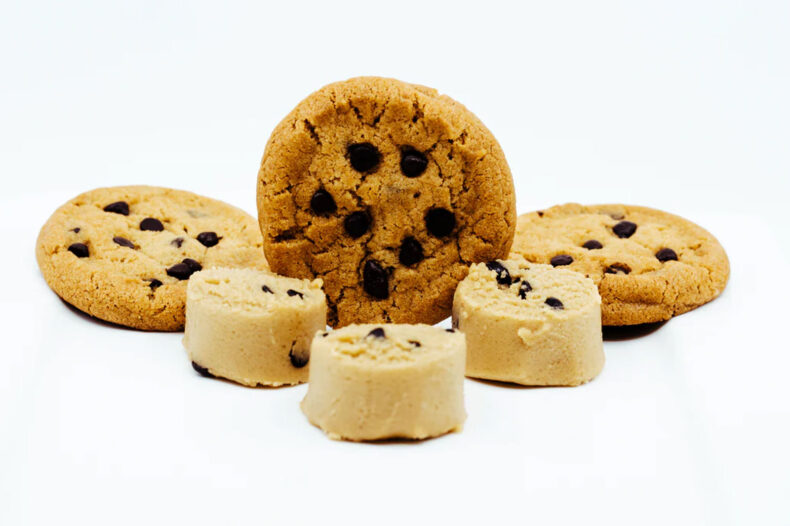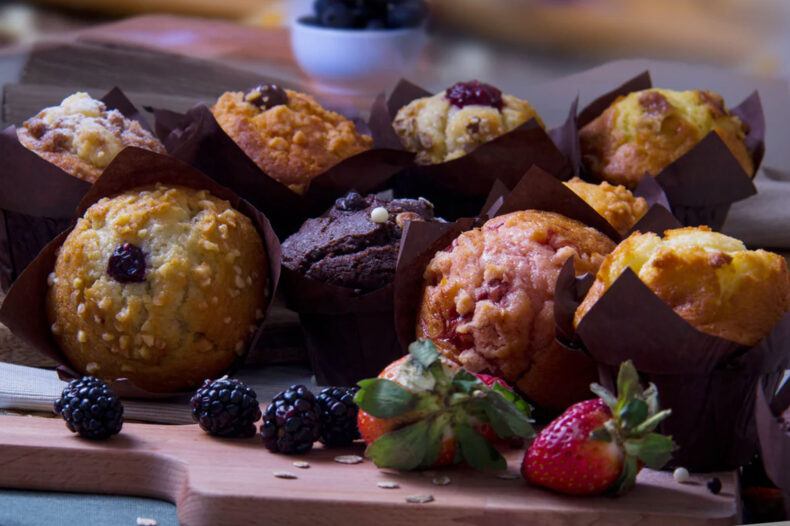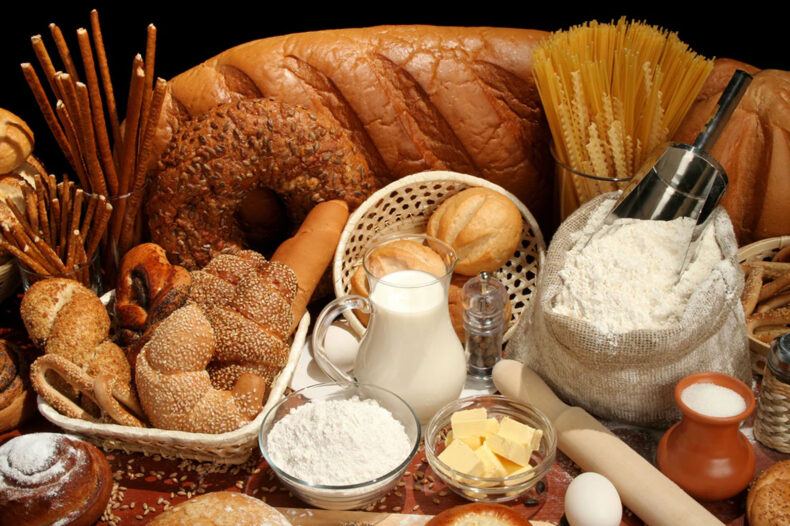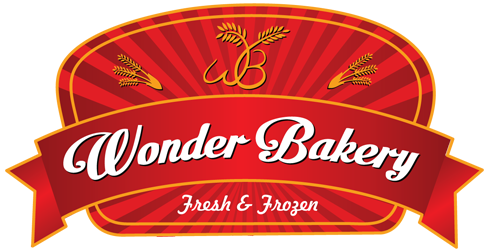An Oven That Can Bake, Roast, and Cook to Perfection? Definitely!
Convection ovens are well suited to the needs of the modern kitchen, extremely easy to use, and produce perfect results. Now every household can enjoy high-quality, modern appliances that offer the enthusiastic cook the opportunity to create dishes like a true professional.
Our lives are so busy that we often have to sacrifice taste to time. But not you. Your convection oven will give you well-prepared, good-looking, great-tasting food – fast. It’s perfect for busy cooks like you who want to feed your families well but just don’t have the time or the inclination to fuss.
Today, modern ovens can do much, much more than simply produce heat. They are so cleverly designed that for every type of food there will be just the right oven function to prepare it in the best way. For after all, the art of cooking is all about understanding the different characteristics of each type of food and knowing how to develop flavours to the full. The ideal oven will be capable of everything: baking, roasting, cooking and grilling – to perfection.
An Oven That Can Bake, Roast, and Cook to Perfection? Definitely!
Convection ovens are well suited to the needs of the modern kitchen, extremely easy to use, and produce perfect results. Now every household can enjoy high-quality, modern appliances that offer the enthusiastic cook the opportunity to create dishes like a true professional.
Our lives are so busy that we often have to sacrifice taste to time. But not you. Your convection oven will give you well-prepared, good-looking, great-tasting food – fast. It’s perfect for busy cooks like you who want to feed your families well but just don’t have the time or the inclination to fuss.
Today, modern ovens can do much, much more than simply produce heat. They are so cleverly designed that for every type of food there will be just the right oven function to prepare it in the best way. For after all, the art of cooking is all about understanding the different characteristics of each type of food and knowing how to develop flavours to the full. The ideal oven will be capable of everything: baking, roasting, cooking and grilling – to perfection.
Heat in Cooking
Heat transfer is an exchange of thermal energy between two objects. The rate of heat transfer depends upon the temperatures of each entity and the medium through which the thermal energy is being transferred. In cooking, heat transfer refers to heating your food items through a cooking appliance, such as a stove, fryer, microwave, or oven.
Heat naturally moves from hot surfaces to cooler surfaces. The movement of heat is commonly referred to as heat transfer. There are three methods of heat transfer: conduction, convection, and radiation. Cooking of food usually uses a combination of these methods.
Choosing the correct cooking method will determine the quality of the end product. In addition to quality, the color, flavor, texture, and nutrient content will also be affected by the cooking method chosen. The length of time that foods cook will depend on the cooking temperature, size, and shape of food, whether bone is present, the quality of the food itself, how much you are cooking at one time, and the degree of doneness desired.
In addition, more recently, physiologists in the course of research have identified new opportunities for coffee drinks. It turns out that with the help of coffee you can develop muscle mass. Taking a small dose of caffeine can increase your workout by up to 44% and can reduce fatigue. The researchers also found that caffeine is extremely effective in the fight against muscle pain. Moreover, this alkaloid inhibits the possible development of heart disease and cancerous tumors.
Conduction
Conduction transfers the heat using direct contact; food is heated directly in a metal pan, in a liquid, or surrounded by air. Dropping an egg into a pan of boiling water is a good example. The heat from the water is transferred to the egg. As the outside of the egg becomes warm, the heat moves into the center of the egg, continuing inward until the entire egg is heated to the desired temperature.
The efficiency of the heat transfer depends on the conductivity of materials in contact with the food. Copper is one of the best conductors of heat. Heat transfers quickly from the heat source into the food through the copper cookware. In contrast, water, stainless steel, and the food itself, are poor conductors of heat.
Convection
Convection heat transfer occurs faster than conduction. Convection occurs by the movement of air, liquid, or steam around the food. For example, as a pan of soup heats up on the stove, heat moves from the bottom of the pan. This movement of hot and cool liquids or gases combines. Stirring the pan redistributes the heat from the bottom of the pan throughout the other ingredients.
Convection is the reason frozen foods thaw more quickly when placed under cold running water. Convection can also occur mechanically by means of a fan that circulates the air in an oven. A convection oven can reduce the cooking time by 25 percent over standard ovens. It also increases browning of the food because of the concentrated heat on the surface of the food.
Radiation
Radiation heat transfer occurs when microwave (light waves) or infrared energy (heat waves) are spread into the food. As the microwaves penetrate the food, they bump into molecules of water and fat, causing them to vibrate rapidly.
This vibration creates friction, which creates heat that cooks the food. The larger the piece of food, the more unevenly the microwaves penetrate, so microwave cooking has some limitations.
Effects of Heat
When heat is added to food, it causes changes in color, texture, flavor, shape, and nutritional value. Heat affects protein, carbohydrates (sugars and starches), fats, and water in different ways.
Careful selection of the cooking method based on the contents of the food and the desired outcome will lead to the best quality product.
Caramelization
Caramelization or browning occurs when sugar and proteins are combined and exposed to high heat.
This applies to both natural sugars in food and sugar added to foods. Excessive caramelization may result in an unappealing dark color or burned flavor.
Evaporation
Most foods contain water. As the water in foods reach 212°F, the water turns to steam and evaporates.
Heat that is too high or prolonged cooking may dry out the product through excessive evaporation of moisture.
Gelatinization
Gelatinization is the thickening of liquids. Starch, in the presence of water, gelatinizes when heated. The starch granules absorb water. When heated, the starch granules swell and then burst, leaking starch into the surrounding liquid.
Swelling is usually complete at 190 to 195°F. Excessive or prolonged heat, not enough heat, inadequate dispersion of dry starch in melted fat or cold water, and excessive agitation may interrupt proper starch gelatinization.
Coagulation
Proteins are denatured or coagulated by heat or a change in pH. The proteins change from a semisolid to a solid state during cooking. An example includes cooking an egg white. This process occurs between 160° to 185°F. The heat causes the unfolded protein chains to become entangled and lump together.
The same coagulation occurs when an acid such as lemon juice or vinegar is added to milk. The pH is altered and the casein (milk protein) denatures and coagulates into spongy lumps. In meats, excessive heat will cause meat proteins to lose moisture and become tough.
Convection ovens use technology by circulating hot air around your food and, in many cases, produce equally good or better-tasting foods than a countertop air fryer.
The convection oven is literally a set-it-and-forget-it cooking assistant. It has state-of-the art technology to make cooking up to five times as fast. It uses the right high speed cooking method and temperatures to give you perfectly cooked foods – day in and day out.
How Do You Know if Your Oven Uses Convection Baking?
Check the back wall. Convection ovens include a fan built into the rear of the oven. They are available in gas or electric and result in nice, even baking. Some ovens include both regular (fan off) and convection (fan on) modes. Some higher-end ovens include “true” mode, where a heating element surrounds the fan for extra-heated air.
Just to get technical for a minute, the oven has 2900 watts of cooking power from the heating elements, a variable 2-speed fan, plus 1000 watts of microwave power. The convection oven cooks food by moving superheated air so quickly that the air is pushed into the food, cooking it moist and tender inside, crisp and spectacularly brown on the outside. Food in the convection oven receives heated air from every direction – top, bottom and sides.
Take Time Now to Save Time From Now on
The best news is that you don’t have to think about what the heat source is, how hot the air is, how fast it’s moving, whether it should be fast at the beginning and slow at the end or when to add the microwave boost.
There’s an amazing “brain” in the oven that’s been programmed to handle everything for you. Once you learn the simple techniques of using the convection oven you don’t have to worry about anything. You set it and forget it, until the oven’s audible prompt reminds you of the next step or that the food is done.
We recommend using the Fan plus function for baking and roasting on several levels at the same time. A lower temperature can be selected than for Conventional heat as the heat is distributed around the food by the fan.
Select Bottom heat towards the end of the cooking time, for example to finish off pastry bases.
Moisture plus will produce optimum results when cooking not only bread and cakes, but also roasts, baked dishes and pizzas as moisture is used in addition to Fan plus. Food will be moist and tender on the inside and crispy on the outside.
The Moisture plus function allows you to bake and roast using a combination of Fan plus and moisture. It is ideal for all types of bread and rolls as a crispy, glossy finish is achieved.
When you select Moisture plus, you can choose between 4 different bursts of steam (Automatic burst of steam; or 1, 2 or 3 manual bursts of steam). The amount of water the oven requires will depend on the selection. For 1 burst of steam, fill a glass with approx. 80 ml of water, hold under the filling tube and allow the water to be drawn into the oven. Approx. 150 ml water is required for 2 bursts of steam and approx. 230 ml for 3 bursts of steam. If the automatic choice has been selected, the burst of steam will be injected automatically when the required temperature has been reached. With 1, 2 or 3 bursts of steam, these have to be injected manually, allowing you to individually perfect the cooking or baking process. Bread should be exposed to steam in the first few minutes as it will rise better and will achieve a good outer crust while remaining light and soft on the inside. Meat should be roasted in an open dish or directly on the rack so that it can absorb the steam. The great advantage of Moisture plus is that food does not dry out – it will be soft and succulent, but still with a crispy outer crust.
Preheating the oven will help the browning of breads and baked goods. After baking, bread should be golden brown and sound hollow when tapped. Do not let bread stand in oven; remove from pans immediately to cool on wire rack.






